Amazon Conversion Rate Optimization from A to Z
Want to improve your Amazon conversions? Here's a quick guide to Amazon conversion rate optimization - done right.
Updated November 7, 2024

But what exactly is Amazon conversion rate (CVR), and how do you calculate it? More even, how do you optimize it?
In this blog, we will explore these questions and more as we dive into the world of Amazon CVR Optimization. We will explore non-listing and listing conversion optimization tactics, from delivery methods to product images to your brand's story.
We will also discuss the importance of getting more Amazon reviews and tips for testing and measuring your results. And to help you make things easier, we will also highlight some of the top CRO tools for Amazon.
Meet the expert
Mina is a multiple seven-figure seller in the supplement industry, investor, Amazon PPC expert, and founder of the Trivium Group, an Amazon Advertising agency. He has consulted over 400 brands and 3 aggregators worth $1.2 billion combined.
What is Amazon conversion rate
In simple terms, Amazon CVR is the percentage of visitors to an Amazon seller's product description page who end up making a purchase. This metric measures how effectively you can convert Amazon shoppers into buyers.
A high CVR indicates that your product offer is attractive and convincing enough to entice shoppers to buy. A low CVR suggests there may be issues with your product listings, pricing, or customer experience.
Improving your CVR on Amazon can have numerous benefits, including better organic ranking, lower customer acquisition costs in PPC, and greater exposure for your products throughout the network.
How to calculate your Amazon Conversion Rate
To calculate the conversion rate on Amazon, follow these steps:
- Log in to your Amazon Seller Central account.
- Hover over the Reports tab and click on Business Reports.
- Click on the Sales Dashboard and select Details Page Sales and Traffic by Parent Item.
- Look for the Sessions and Total Order Items columns in the table.
- Choose the time range you want to analyze (default is the last 30 days).
- Divide the number of Total Order Items by the number of Sessions to get your conversion rate, and then multiply by 100 to get the percentage.
Conversion rate = (Total number of orders / Total number of sessions) x 100%.
For example, if your Amazon store had 10,000 sessions and 500 orders in a given month, your CVR would be (500/10,000) x 100% = 5%. This means that 5% of the people who visited your Amazon store made a purchase.
The average eCommerce conversion rate ranges between 2.5-3%. However, for Amazon the average conversion rate is 10% to 15%, and is even higher for Prime members, and the highest compared to Amazon’s competitors.
The CVR is an essential metric for Amazon sellers as it helps to measure the effectiveness of their storefront and product listings in converting visitors into customers.
Why is Amazon conversion rate optimization important?
Is it worth focusing on your Amazon Conversion Rate? The short answer is "Yes." Paying attention to your Amazon conversion rate comes with a series of benefits:
It improves organic ranking
Amazon conversion rate not only affects your sales and revenue but also impacts your organic ranking and visibility on Amazon.
When your conversion rate increases, it indicates to Amazon's algorithm that your products are popular, in demand, and relevant to the search terms customers are searching for. The higher your conversion rate, the better your chances of ranking higher on Amazon search results, attracting more shoppers, and ultimately driving an increase in sales.
It can help you lower your customer acquisition in PPC
When you optimize your conversion rate on Amazon, you are improving the effectiveness of your product listings, making them more appealing and relevant to potential customers. This leads to more clicks on your listings and, ultimately, more sales.
By improving your CVR, you are increasing your advertising spend's return on investment (ROI), which can help you lower your customer acquisition costs in Amazon PPC (pay-per-click) advertising.
When your listings convert at a higher rate, you can generate more sales from the same amount of ad spend, allowing you to lower your overall cost per acquisition (CPA) and improve your profitability. This can help you to compete more effectively in the Amazon marketplace and achieve greater success in your eCommerce business.
Hiring an experienced Amazon PPC expert familiar with Amazon Seller Central can result in significant cost savings and expedited brand growth.
It helps expose your products throughout the network
The "best sellers list", "customers also viewed", "compared with similar items", and other similar Amazon features are critical to product discovery. By increasing your CVR, your product has a higher chance of being featured in these lists and being exposed to a wider audience.
When customers view your product and make a purchase, Amazon’s algorithm will begin to recommend your product to other customers who have purchased similar items. This can help to increase your sales and exposure even further.
Non-Listing CRO Tactics
There are two main categories of CRO tactics: non-listing-related and listing-related. Here are some of the most efficient non-listing CRO tactics (things you can do outside of the Amazon listing itself to improve your conversion rate.)
Delivery method (FBA or seller-fulfilled prime)
Regarding eCommerce CRO, choosing the correct delivery method is an essential factor.
Using Amazon's FBA (Fulfillment by Amazon) service can significantly improve your CVR. With FBA, Amazon handles all the shipping and handling from their Fulfillment Centers, which can improve delivery times, reduce shipping costs, and enhance the customer experience.
FBA also offers benefits like Prime eligibility. Customers are more likely to trust and buy from Prime-eligible products due to the guaranteed fast shipping and excellent customer service that comes with Prime, especially if it’s an FBA product.
On the other hand, if you decide to use seller-fulfilled prime, it can also be a great way to increase your CVR. By fulfilling the orders yourself, you have more control over the shipping process, which allows you to provide a more personalized customer experience.
To increase revenue from your Amazon business, consider hiring an Amazon FBA expert who can handle product management, business operations, marketing, customer service, and sales support.
Price
Pricing your products competitively can give you an edge over your competitors. Customers on Amazon are often price-sensitive and looking for the best deals. This is particularly important for expensive products with lower conversion rates. By offering competitive product pricing, you can entice shoppers to choose your products over others.
Discounting
Strategies such as bundling, offering discounts or coupons, and creating urgency with limited-time offers can be powerful tactics to encourage potential buyers to convert on the Amazon Marketplace.
Discounts can make your product stand out from the competition, incentivize customers to make a purchase, and positively impact your CVR.
Listing Conversion Optimization Tactics
Optimizing your Amazon listings is essential to succeeding on the platform, and you can use various tactics to increase your conversion rate and drive more sales.
Amazon listing optimization freelancers are experts at optimizing product listings and using Amazon SEO (search engine optimization) techniques, A/B testing, and keyword research to maximize your product visibility.
Product Title
Product listing CRO tactics for product titles are crucial to make your product stand out in a crowded marketplace. Optimizing your product title can increase your product's visibility, attract more potential customers, and ultimately drive more sales.
Tech specs
Including relevant technical information in your product title can help attract customers specifically searching for that type of product. Use clear and concise language to communicate your product's technical specifications, such as size, weight, and material. Avoid using technical jargon that may confuse or deter customers.
Key product features
Your product title should highlight the most important features and benefits of your product in a way that is appealing to potential customers.
Use descriptive language to communicate the unique selling points of your product, such as its durability, ease of use, or versatility. Ensure to include any keywords that customers may be searching for when looking for a product like yours.
Keep it simple
The product title should be easy to understand and read, so customers can quickly identify your product and why they need it.
Use simple language that is easy to understand, and avoid using complicated words or phrases. Keep the title short and to the point. By keeping your product title simple, you can help customers quickly and easily find your product and encourage them to buy.
Product Images
Images are a crucial element of e-commerce product listings, as they are the first things a buyer sees when presented with a list of products, and they can have a huge impact on customer purchase decisions.
Effective conversion optimization tactics for product images can help you showcase your product features, anticipate customer objections, and highlight the benefits of your product.
Context
Product images are a critical element of any e-commerce store, as they help online shoppers visualize the product and make informed purchase decisions.
Ensure that your product images provide context for your product, including who it is for, how it is used, how it works, what it comes with, and how it looks in different situations. This will help customers understand the product and imagine how it would fit into their lives.
Unique features
Highlighting the unique features of your product in your images can help set it apart from the competition. Use high-quality images to showcase the unique selling points of your product, such as its design, functionality, or materials. Use close-up shots or zoom features to give customers a detailed view of the product's unique features.
Anticipate arguments
Use your product images to anticipate and address any potential objections or arguments customers may have about your product.
For example, if your product is small, use an image that shows how compact it is while still demonstrating its functionality. If your product is expensive, showcase the quality and durability of the materials used to justify the price.
What’s in it for the buyer
Make sure your product images show the benefits of your product and what's in it for the buyer. Use images that show how the product can be used and how it can improve the customer's life.
Focus on the product's benefits and outcomes, rather than just the features. This will help customers see the value in your product and increase the likelihood of a purchase.
Offer product variations
Offering product variations on Amazon can help you optimize and improve your product conversion rate in several ways. By providing customers with a range of product variations, such as different colors, sizes, or styles, you can increase the likelihood of a purchase by catering to their specific needs and preferences.
In addition to attracting more customers looking for specific variations and increasing your average order value by encouraging customers to purchase multiple items, product variations can help you optimize your listings for search and browsing.
By including relevant keywords in your variation titles and descriptions, you can increase the visibility of your products and improve your search rankings, making it easier for customers to find your products.
Amazon's platform can be challenging to navigate, making it a daunting task even for experienced sellers. As a result, many businesses seek the assistance of Amazon experts.
Optimize your product listing
The next vital part of your success on the platform is optimizing your product listings. Most brands hire Amazon virtual assistants to help them with the most tedious tasks on this list.
Keep it concise
When it comes to product bullet points and descriptions, it's essential to keep the copy concise and to the point.
Focus on the most important information customers need to know about your product, such as its primary functions, key features, and benefits. Avoid using long sentences or paragraphs, and use bullet points to break the information into digestible chunks for easy reading.
Don’t overcomplicate the copy
Avoid overcomplicating the language in your listing content. Use simple, easy-to-understand language that resonates with your target audience. Avoid using technical jargon or industry-specific terms that customers may not understand.
Emphasize the features for functional products
If your product is functional, it's essential to emphasize its features. Highlight the product's key functions and how they can benefit the customer. Use images or diagrams to illustrate the product's features and how they work.
Add your brand’s story (under the Product description)
Adding your brand's story under the product description can help customers connect with your brand more personally by offering an enhanced user experience. Share how your brand started, what inspired you to create the product, and how it has helped other customers. This can help build trust and credibility with your target audience.
Use EBC modules
Human attention span is pretty low -- especially online, where distractions are one click away. Enhanced Brand Content (EBC), or A+ content, modules are a powerful tool for creating engaging product listings.
Use EBC modules to showcase your product's features, benefits, and unique selling points in a visually appealing way. Use high-quality images, videos, and infographics to tell the story of your product and how it can benefit customers.
Use sense adjectives
Sense adjectives can help bring your product to life in your customers' minds. Use sensory language describing how the product looks, smells, or tastes. For example, instead of saying "soft fabric," you can use "luxuriously soft fabric" to create a more vivid and compelling image in the customer's mind.
Use headings
Headings can help break up the information in your product listing and make it easier to read. Use headings to highlight key information, such as the product's key benefits, features, or specifications. This can help customers quickly find the necessary information and make informed purchase decisions.
Get More Amazon Reviews
Reviews on Amazon improve conversion rates by providing social proof -- and showing your customers other people enjoyed your products is one of the best evergreen marketing strategies you can use.
Potential shoppers often read reviews before making a purchase decision, and positive reviews can increase the likelihood of a conversion. Taking steps to increase reviews can have a massive impact on increasing your product conversion rate.
Quality product packaging
Product packaging can significantly impact a customer's perception of a product. Bad packaging can make customers notice product flaws, while great packaging can lead them to overlook flaws.
Therefore, investing time and effort into your product packaging can help you achieve a 4.5 or 5-star rating. This includes using full-color boxes, including adequate use manuals and other product inserts, and avoiding plain boxes and poly bags.
It's important to note that your product packaging is often the first impression customers will have of your product and can heavily influence their review.
Use the request a review button
Using the request a review button increases the likelihood of customers leaving reviews to boost the number of reviews. The switch can be used on orders delivered within 4-30 days and sends a product rating and seller feedback request in the same email.
The message cannot be customized, and clicking the button does not prevent requesting a review separately. You can find the button in your Manage Orders page within Seller Central.
Use reviews in ad copy
Incorporating positive reviews into your ad copy can help increase click-through rates and conversions. Highlighting specific product features or benefits mentioned in the reviews can also help increase the ad's relevance to the customer.
Additionally, promptly addressing negative reviews can help improve your brand reputation and demonstrate to customers that you value their feedback and are committed to providing quality products and service.
Use Reviews to Improve Product Quality
Using customer feedback from reviews can help identify areas for improvement in your product. This can lead to product quality improvements, ultimately leading to higher conversion rates and customer satisfaction.
Test and Measure Results
Testing and measuring the results of optimizations made to increase conversion rates on Amazon is crucial to understanding the effectiveness of those changes. Without testing and measuring, it is impossible to know whether the optimizations are improving conversion rates.
By tracking metrics such as click-through rates, conversion rates, and sales, you can see the impact of the optimizations and make data-driven decisions about where to focus your efforts. Testing and measuring also allows you to identify areas for further optimization and improvement, ensuring that you continue to see growth in your conversion rates over time.
CRO tools for Amazon
Using (CRO) tools for Amazon can help eCommerce sellers measure results and identify areas where they can improve their listings and ultimately see an increase in conversion rate.
One such testing tool is Amazon's Manage Experiments feature, which allows sellers to run A/B tests on their listings. This feature allows sellers to test different variations of their listings and see which version converts better. Sellers can test different product images, titles, descriptions, and more to find the optimal combination for their target audience.
Similarly, PickFu is a testing and analytics tool that allows sellers to test different listings variations with real people, providing valuable feedback on which version is more appealing to potential customers. By using these CRO tools, sellers can continually optimize their listings to improve their conversion rate and drive more sales.
Make sure the testing period is even
Making sure the testing period is even when running different split tests on elements of an Amazon product listing is important because it helps to eliminate any external factors that could influence the results.
This means that all tests should be conducted for an equal amount of time to ensure that the data collected is accurate and fair. Doing so lets you make informed decisions on which elements to optimize to improve your conversion rate and overall sales.
Only change one parameter
When split testing elements of an Amazon product listing, it is important only to change one parameter at a time. This allows you to accurately measure the impact of each change on the conversion rate.
If you change multiple parameters at once, it can be difficult to determine which change had the biggest impact on the conversion rate, making it harder to optimize your product listing effectively.
By changing one parameter at a time, you can pinpoint the specific change that had the greatest impact and make more informed decisions for future optimization efforts.
Don't have the time to do it all on your own - or need some help to ensure your Amazon Conversion Rate Optimization efforts run smoothly?
Partnering with an Amazon marketing agency could be the next step to take your Amazon sales to the next level. Their expertise can help you achieve greater success and reach new heights in your Amazon journey.
FAQs
How we can improve conversion rate on Amazon?
Improving product conversion rate on Amazon requires a multi-faceted approach. To start with, optimizing your product listings and pricing strategy can significantly impact the rate of conversions. This includes optimizing yur Amazon SEO by crafting clear, concise and attractive product titles, descriptions, and images, highlighting product details, and offering competitive pricing. Using Amazon's fulfillment services like FBA can also help boost sales through its fast and reliable delivery.
Furthermore, leveraging customer reviews and social proof, running split tests to optimize listings, and investing in marketing efforts can help drive more traffic and improve conversion rates. It's important to constantly monitor and analyze performance metrics and make data-driven decisions to improve your Amazon presence continually.
What is a good Amazon conversion rate?
A good Amazon conversion rate can vary depending on the product category, the product type, and the market competition. However, 10-15% Amazon conversion rates are generally considered good performing products. Keep in mind that CVR can be influenced by many factors, such as product pricing, product listing quality, customer reviews, and the overall online shopping experience. It's essential for eCommerce retailers to continually monitor and optimize their conversion rate to maximize sales potential on Amazon. By analyzing and adjusting various aspects of your product ad, such as pricing, images, product title, and customer reviews, you can improve your conversion rate and achieve greater success on Amazon.
How do you optimize conversion rate?
To optimize your conversion rate on Amazon, there are several steps you can take. First, make sure your product listing is as clear and concise as possible, highlighting your product's key features and benefits. Use high-quality product photography and product videos to help customers' shopping journey. Additionally, consider offering FBA (Fulfillment by Amazon) to provide customers faster and more reliable shipping. Another crucial factor in optimizing your conversion rate is customer reviews. Encourage customers to leave reviews by following up with them after their purchase to create a loyal customer base.
Why is my conversion rate so low Amazon
If you're struggling with a low conversion rate on Amazon, several factors could be at play. It's possible that your product listing isn't optimized for search. When entering a search query in the Amazon search bar, the wrong keywords can make it difficult for prospective customers to find your product. Another potential issue could be the price of your product compared to competitors. Not offering FBA as a fulfillment option could also be a contributing factor. Poor customer reviews can also turn potential customers away, so it's important to encourage satisfied customers to leave positive product reviews. Analyzing your product images and descriptions, as well as your Amazon advertising marketing efforts, can also help identify areas for improvement. Optimizing your Amazon product listing and offering a great shopping experience can help increase your conversion rate and drive sales.
How do I drive conversions on Amazon?
To drive conversions on Amazon, there are several strategies that sellers can employ. First, ensure that your product listings are optimized for search engines and provide clear and accurate information about your products. Offer competitive pricing and consider using Amazon's FBA program to provide fast and reliable shipping to customers. Encourage customer reviews and feedback to improve your product's visibility and reputation on the platform. Use high-quality product images with a white background for the primary image to showcase your products and help customers make informed purchasing decisions. In addition, ensure your product listing is optimized for mobile devices and desktop users. Consider using targeted Amazon advertising campaigns, such as Amazon Sponsored Products, to reach customers most likely to be interested in your products. Finally, continuously track and analyze your sales data in your business reports and adjust your strategies to maximize your product conversion rate over time.


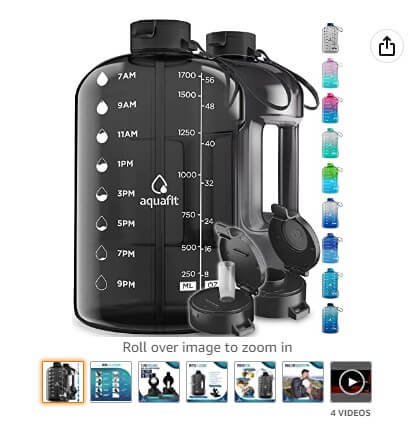
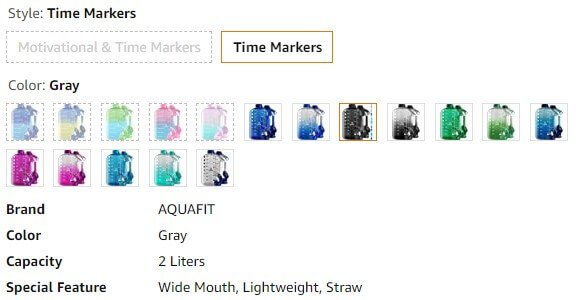
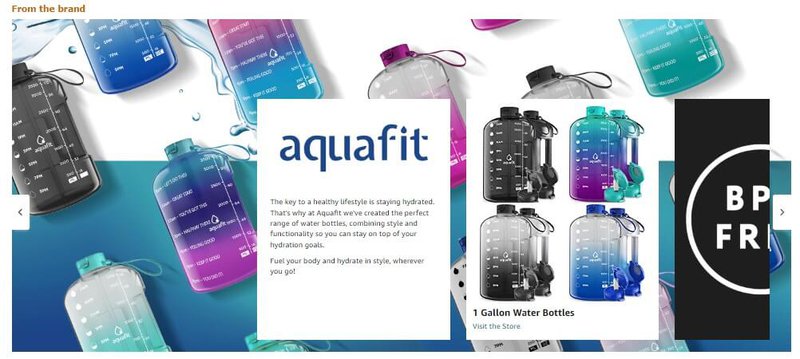
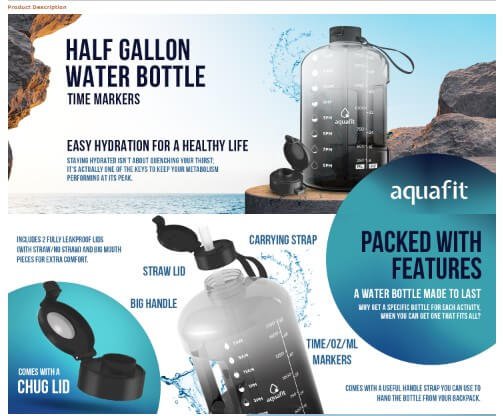
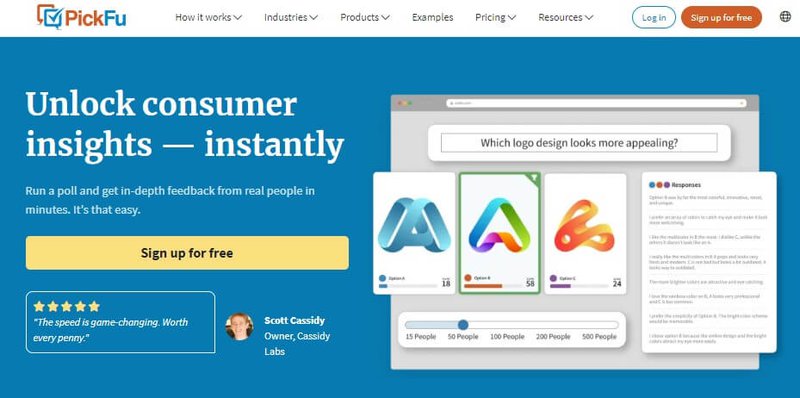
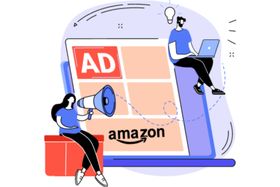

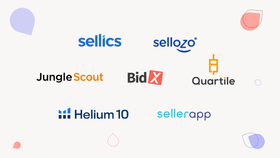

![Amazon Influencers: Best Ones to Work With + 5 Easy Ways to Find them [{year}]](https://entail.mayple.com/en-assets/mayple/fit-in/280x280/63d7e67372a499e8d5a7f458_amazoninfluencers1_871022271cf18984e4758a4f07c692a7_2000-1699518567706.jpg)